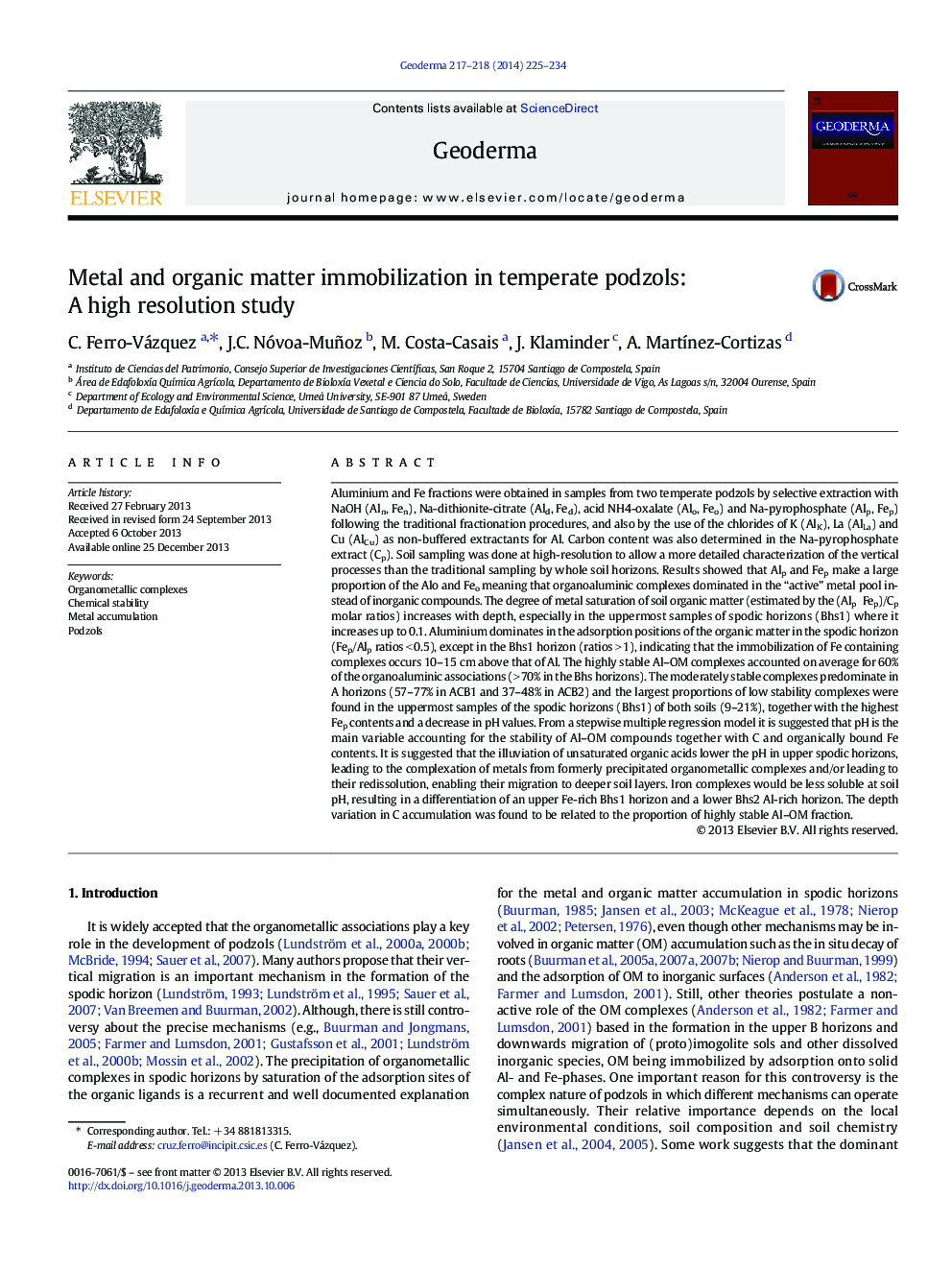| کد مقاله | کد نشریه | سال انتشار | مقاله انگلیسی | نسخه تمام متن |
|---|---|---|---|---|
| 4573430 | 1629476 | 2014 | 10 صفحه PDF | دانلود رایگان |
• The influence of the metal fractionation on temperate podzolization is studied.
• Selective Al and Fe extractions were addressed with high vertical resolution.
• We checked the chemical stability of the OM–Al associations in temperate podzols.
• The results support that podzolization is organically driven.
• Long term C accumulation is related to high stability Al–OM complexes.
Aluminium and Fe fractions were obtained in samples from two temperate podzols by selective extraction with NaOH (Aln, Fen), Na-dithionite-citrate (Ald, Fed), acid NH4-oxalate (Alo, Feo) and Na-pyrophosphate (Alp, Fep) following the traditional fractionation procedures, and also by the use of the chlorides of K (AlK), La (AlLa) and Cu (AlCu) as non-buffered extractants for Al. Carbon content was also determined in the Na-pyrophosphate extract (Cp). Soil sampling was done at high-resolution to allow a more detailed characterization of the vertical processes than the traditional sampling by whole soil horizons. Results showed that Alp and Fep make a large proportion of the Alo and Feo meaning that organoaluminic complexes dominated in the “active” metal pool instead of inorganic compounds. The degree of metal saturation of soil organic matter (estimated by the (Alp Fep)/Cp molar ratios) increases with depth, especially in the uppermost samples of spodic horizons (Bhs1) where it increases up to 0.1. Aluminium dominates in the adsorption positions of the organic matter in the spodic horizon (Fep/Alp ratios < 0.5), except in the Bhs1 horizon (ratios > 1), indicating that the immobilization of Fe containing complexes occurs 10–15 cm above that of Al. The highly stable Al–OM complexes accounted on average for 60% of the organoaluminic associations (> 70% in the Bhs horizons). The moderately stable complexes predominate in A horizons (57–77% in ACB1 and 37–48% in ACB2) and the largest proportions of low stability complexes were found in the uppermost samples of the spodic horizons (Bhs1) of both soils (9–21%), together with the highest Fep contents and a decrease in pH values. From a stepwise multiple regression model it is suggested that pH is the main variable accounting for the stability of Al–OM compounds together with C and organically bound Fe contents. It is suggested that the illuviation of unsaturated organic acids lower the pH in upper spodic horizons, leading to the complexation of metals from formerly precipitated organometallic complexes and/or leading to their redissolution, enabling their migration to deeper soil layers. Iron complexes would be less soluble at soil pH, resulting in a differentiation of an upper Fe-rich Bhs1 horizon and a lower Bhs2 Al-rich horizon. The depth variation in C accumulation was found to be related to the proportion of highly stable Al–OM fraction.
Journal: Geoderma - Volumes 217–218, April 2014, Pages 225–234
